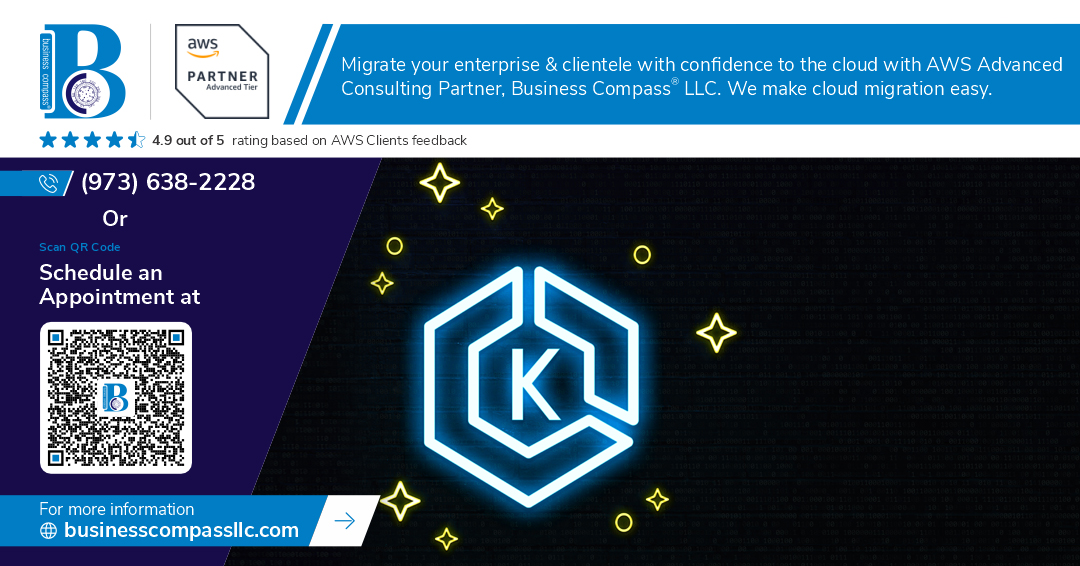You’re staring at your Kubernetes cluster, feeling that constant security anxiety. “Are my secrets really safe?” It’s the question that haunts every DevOps engineer’s sleep.
Let’s be honest—managing secrets in Kubernetes is a pain point we all share. Hard-coded values, manual updates, and that nagging feeling something might leak.
That’s why implementing the External Secrets Operator on AWS EKS with Terraform isn’t just another tech setup—it’s peace of mind. This approach creates a secure bridge between your Kubernetes workloads and AWS Secrets Manager, handling the sensitive stuff properly.
I’ve seen teams transform their security posture overnight with this pattern. But here’s what most tutorials miss: the critical configuration details that make this setup truly production-ready.
Understanding Kubernetes Security Challenges
Common vulnerabilities in Kubernetes clusters
Kubernetes security isn’t a walk in the park. From misconfigured RBAC and exposed dashboards to unpatched CVEs and container escape vulnerabilities – attackers have plenty of entry points. One compromised pod can quickly snowball into full cluster access, especially when privileged containers run unchecked or network policies remain undefined.
The risk of hardcoded secrets in configurations
Hard-coding secrets in your manifests or Docker images is like leaving your house key under the doormat – convenient but dangerously obvious. These credentials get committed to version control, shared in team chats, and stored in CI/CD pipelines. Before you know it, your production database password is sitting in plain text across a dozen developer laptops and repositories.
Security compliance requirements for cloud-native applications
Cloud-native apps face a regulatory gauntlet – from GDPR and HIPAA to PCI DSS and SOC2. Each framework demands tight secret management with proper rotation, audit trails, and access controls. Failing these requirements isn’t just about fines; it’s about lost customer trust that takes years to rebuild.
Why traditional secret management falls short
Traditional secret management approaches crumble in Kubernetes environments. Static secrets in config files don’t rotate automatically. Environment variables expose secrets to logs. Homegrown solutions lack scalability across multiple clusters and clouds. And without centralized management, tracking who accessed what becomes nearly impossible as your infrastructure grows.
Introduction to External Secrets Operator (ESO)
What is External Secrets Operator and how it works
External Secrets Operator acts as a bridge between your Kubernetes cluster and external secret stores like AWS Secrets Manager. It syncs external secrets into Kubernetes by fetching secrets from your external provider and injecting them as native Kubernetes secrets—all without exposing sensitive data in your YAML files or Git repositories.
Benefits over native Kubernetes secrets
Native Kubernetes secrets store data as base64-encoded strings—barely security at all. ESO brings actual encryption, centralized management, and audit capabilities. Plus, you can version your secrets, implement proper access controls, and stop storing sensitive data in Git. It’s the difference between leaving your house key under the doormat versus installing a smart lock.
Integration capabilities with AWS secret stores
ESO seamlessly connects with AWS secret management services including Secrets Manager, Systems Manager Parameter Store, and even S3. You configure a SecretStore resource pointing to your AWS credentials, then create ExternalSecret objects that reference specific AWS secrets. ESO handles authentication, fetching, and syncing—making your DevOps workflow secure and automated.
Real-world use cases and success stories
Financial services company Robinhood slashed secret rotation time from days to minutes using ESO. Netflix manages thousands of microservices’ credentials without exposing secrets in their deployment pipeline. And countless startups avoid security nightmares by implementing proper secret management from day one, before their first security audit or compliance requirement hits.
Comparison with other secret management solutions
| Solution | Cloud-Agnostic | Kubernetes Native | Polling/Push | Community Support |
|---|---|---|---|---|
| ESO | ✅ | ✅ | Polling | Strong, CNCF Sandbox |
| Sealed Secrets | ✅ | ✅ | Neither | Good |
| Vault Operator | ✅ | Partial | Both | Strong |
| AWS ASCP | AWS only | Partial | Push | Limited |
| CSI Drivers | ✅ | Partial | Polling | Varies |
Setting Up Your AWS Environment for ESO
A. Configuring AWS Secrets Manager
AWS Secrets Manager is your vault for sensitive data like API keys and database passwords. Create your secrets with meaningful names, tags for organization, and appropriate encryption keys. Group related secrets together and establish a clear naming convention – maybe something like “prod/database/mysql” for easy identification down the road.
B. Setting up IAM roles and policies for secure access
Provisioning EKS with Terraform
Provisioning EKS with Terraform
A. Infrastructure as Code best practices
Terraform isn’t just a tool—it’s your security safety net. When provisioning EKS clusters, always use modules, enforce consistent tagging, implement least privilege IAM roles, and enable version constraints. Store your state files in encrypted S3 buckets with locking via DynamoDB—not on your laptop where coffee spills happen.
Deploying External Secrets Operator on EKS
Deploying External Secrets Operator on EKS
A. Installation methods and options
You’ve got options when installing ESO: Helm chart (my go-to), YAML manifests, or GitOps with Flux/ArgoCD. Helm makes upgrades smooth with customizable values, while manifests give you granular control. Choose based on your existing workflow and team comfort level.
Advanced ESO Configuration Patterns
Implementing secret rotation strategies
Ever tried explaining why your production went down because of an expired secret? Not fun. Implement automated rotation with ESO’s built-in schedulers or AWS Secrets Manager’s rotation functions. Connect these to your SecretStore resource with customizable TTLs and watch your secrets refresh automatically without those 3 AM panic calls.
Multi-environment secret management
Monitoring and Maintaining Your Secure Setup
Monitoring and Maintaining Your Secure Setup
A. Auditing secret access and usage
Keep tabs on who’s accessing your secrets by enabling CloudTrail logging for AWS Secrets Manager. This reveals who grabbed what and when, giving you a complete audit trail. Set up retention policies that make sense for your compliance needs without breaking the bank on storage costs.
B. Setting up alerts for security events
Detect suspicious activity fast by configuring CloudWatch alarms for unusual secret access patterns. Wire these alerts to Slack or PagerDuty so your team can jump on issues immediately. Don’t just set and forget – review and adjust alert thresholds as your usage patterns evolve.
C. Performing regular security assessments
Schedule monthly ESO security reviews. Run automated scans with tools like Trivy to catch vulnerabilities in your deployment. Simulate attacks against your secret management system to find weaknesses before bad actors do.
D. Scaling your solution as your cluster grows
Your secret management needs to grow with your cluster. Monitor ESO performance metrics and be ready to adjust resource allocations when things slow down. Consider implementing secret caching strategies to reduce API calls as your application count increases.
E. Keeping ESO and dependencies updated
Outdated software equals security holes. Subscribe to ESO’s release notifications and test updates in staging before production. Build an automated pipeline that validates version upgrades against your specific implementation to catch breaking changes early.
Securing your Kubernetes cluster requires a robust strategy for managing secrets, and the External Secrets Operator (ESO) provides a powerful solution for AWS EKS environments. By leveraging ESO with Terraform, you can establish a secure infrastructure that protects sensitive information while maintaining operational efficiency. From properly configuring your AWS environment to implementing advanced ESO patterns, you now have the tools to create a comprehensive secrets management system that integrates seamlessly with your existing workflows.
Take the next steps by implementing the monitoring practices outlined in this guide to ensure your secure setup remains resilient over time. Remember that security is an ongoing process—regularly review your configurations, stay updated on best practices, and continuously refine your approach to secrets management. Your Kubernetes workloads will benefit from the enhanced security posture, allowing you to focus on building and scaling your applications with confidence.



















